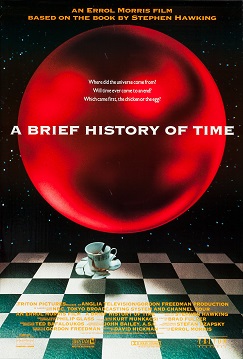George F. R. Ellis writes in Issues in the Philosophy of Cosmology:
9.2 Issue H: The possible existence of multiverses
If there is a large enough ensemble of numerous universes with varying properties, it may be claimed that it becomes virtually certain that some of them will just happen to get things right, so that life can exist; and this can help explain the fine-tuned nature of many parameters whose values are otherwise unconstrained by physics. As discussed in the previous section, there are a number of ways in which, theoretically, multiverses could be realized. They provide a way of applying probability to the universe (because they deny the uniqueness of the universe). However, there are a number of problems with this concept. Besides, this proposal is observationally and experimentally untestable; thus its scientific status is debatable.
My 100-year-old uncle—a lifelong teacher and voracious reader who is still intellectually active—recently sent me Max Tegmark’s book Our Mathematical Universe: My Quest for the Ultimate Nature of Reality, published by Vintage Books in 2014. I could not have had a more engaging introduction to the concept of the Multiverse. Tegmark presents four levels of multiverses that might exist. They are
Level I Multiverse: Distant regions of space with the same laws of physics that are currently but not necessarily forever unobservable.
Level II Multiverse: Distant regions of space that may have different laws of physics and are forever unobservable.
Level III Multiverse: Quantum events at any location in space and in time cause reality to split and diverge along parallel storylines.
Level IV Multiverse: Space, time, and the Level I, II, and III multiverses all exist within mathematical structures that describe all physical existence at the most fundamental level.
There seems little question that our universe is very much larger than the part that we can observe. The vast majority of our universe is so far away that light has not yet had time to reach us from those regions. Whether we choose to call the totality of these regions the universe or a Level I multiverse is a matter of semantics.
Is our universe or the Level I multiverse infinite? Most likely not. That infinity is a useful mathematical construct is indisputable. That infinite space or infinite time exists is doubtful. Both Ellis and Tegmark agree on this and present cogent arguments as to why infinity cannot be associated with physical reality. Very, very large, or very, very small, yes, but not infinitely large or infinitely small.
Does a Level II, III, and IV multiverse exist? Tegmark thinks so, but Ellis raises several objections, noted above and elsewhere. The multiverse idea remains quite controversial, but as Tegmark writes,
Even those of my colleagues who dislike the multiverse idea now tend to grudgingly acknowledge that the basic arguments for it are reasonable. The main critique has shifted from “This makes no sense and I hate it” to “I hate it.”
I will not delve into the details of the Level II, III, and IV multiverses here. Read Tegmark’s book as he adroitly takes you through the details of eternal inflation, quantum mechanics and wave functions and the genius and tragic story of Hugh Everett III, the touching tribute to John Archibald Wheeler, and more, leading into a description of each multiverse level in detail.
I’d like to end this article with a quote from Max Tegmark from Mathematical Universe. It’s about when you think you’re the first person ever to discover something, only to find that someone else has made that discovery or had that idea before.
Gradually, I’ve come to totally change my feelings about getting scooped. First of all, the main reason I’m doing science is that I delight in discovering things, and it’s every bit as exciting to rediscover something as it is to be the first to discover it—because at the time of the discovery, you don’t know which is the case. Second, since I believe that there are other more advanced civilizations out there—in parallel universes if not our own—everything we come up with here on our particular planet is a rediscovery, and that fact clearly doesn’t spoil the fun. Third, when you discover something yourself, you probably understand it more deeply and you certainly appreciate it more. From studying history, I’ve also come to realize that a large fraction of all breakthroughs in science were repeatedly rediscovered—when the right questions are floating around and the tools to tackle them are available, many people will naturally find the same answers independently.
References
Ellis, G.F.R., Issues in the Philosophy of Cosmology, Philosophy of Physics (Handbook of the Philosophy of Science), Ed. J. Butterfield and J. Earman (Elsevier, 2006), 1183-1285.
[http://arxiv.org/abs/astro-ph/0602280]
Tegmark, Max. Our mathematical universe : my quest for the ultimate nature of reality. New York: Alfred A. Knopf, 2014.
“You passed your exam in many parallel universes—but not in this one.”












